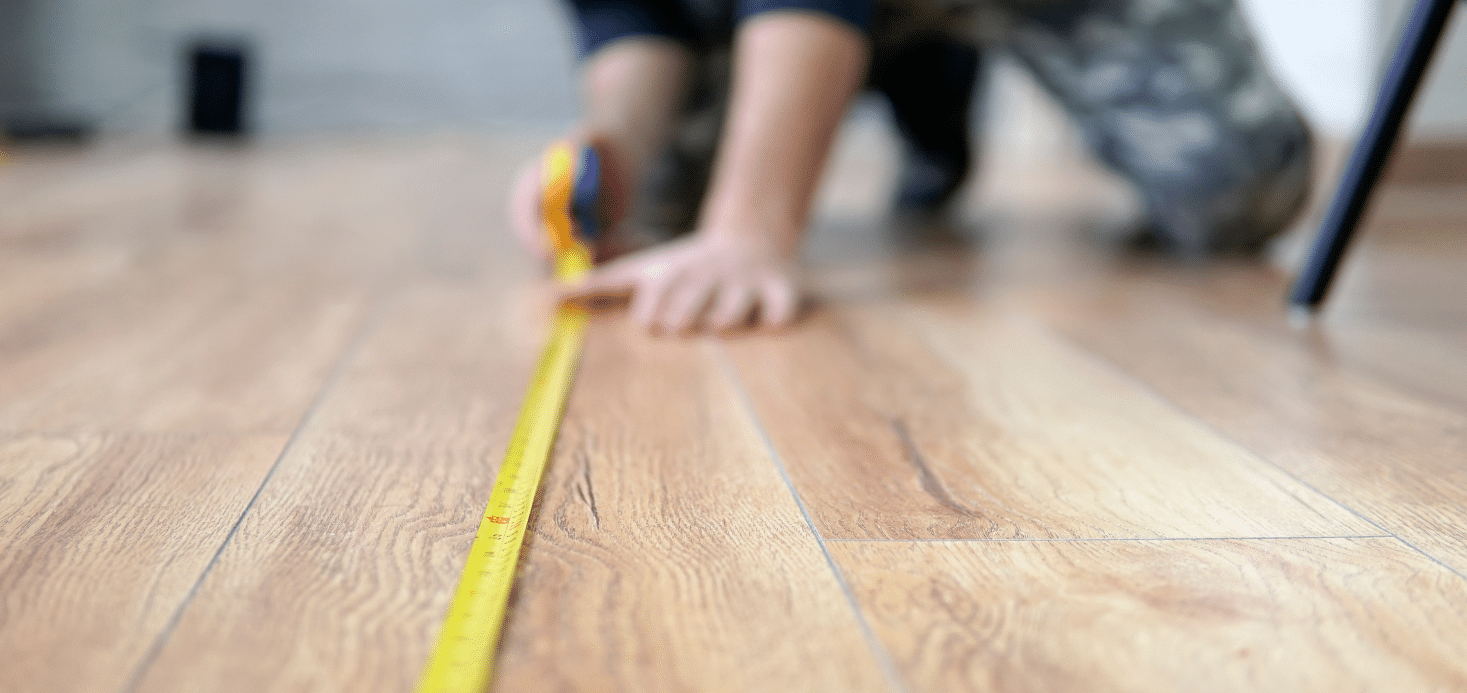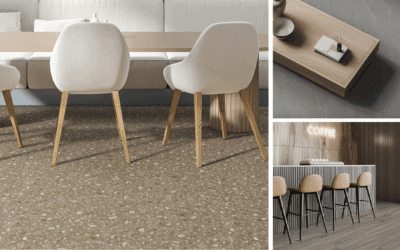The critical thing to know when purchasing a new floor is how to measure a room for flooring. It can be a big letdown if you end up with too much or too little flooring.
In the following article, we will run through how to measure a room for flooring with accuracy and estimate how much flooring you will need to order based on your measurements.
Equipment Needed For Measuring A Room For Flooring
Listed below are a few tools you will need when measuring flooring for a room to calculate.
- Tape measure
- Pencil or pen
- Notepad
- Chalk line (If the room you are measuring is not a square or rectangle)
How To Measure A Square or Rectangular Room For Flooring
If you have a square or rectangular room then you’re in luck as this is the easiest type of room to measure. It’s as simple as measuring both the length and width of your room and multiplying them together.
For instance, if your room is 12 feet long and 10 feet wide then the square footage of the area will be 120 square feet because 12×10 = 120.
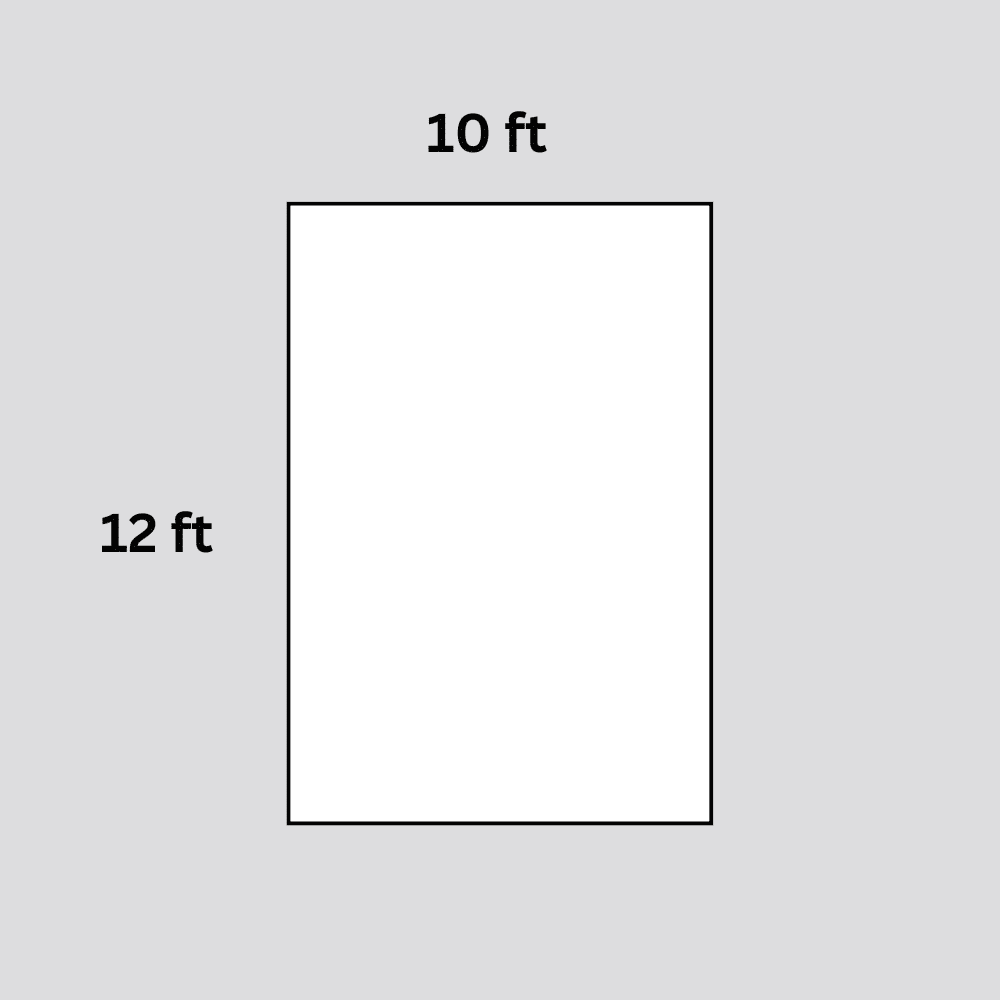
How to Measure an L-Shaped Room for Flooring
Once again this is a super easy task to complete. First, you will need to split your L-shaped room into two rectangular or square sections. Using a chalk line to divide the room can be helpful as this will give you an easily visible line to measure.
To calculate the square footage for flooring of an L-shaped room you can use the same technique as a square or rectangular room. Start with one of the sections of the L-shaped room and measure the length and width. For example, if the first section is 12 feet long and 5 feet wide then the square footage of that area will be 60 because 12×5=60.
Next, move on to your second section and do the same thing. Measure the length and width of the room and multiply them together. For example, say the length of the second section is 6 feet and the width is 3 feet then the square footage of that area will be 18 as 6×3=18.
Once you have the square meters for both sections simply add them together and that will give your overall square meters for your L-shaped room. Using the examples above you would do 60+18=78.
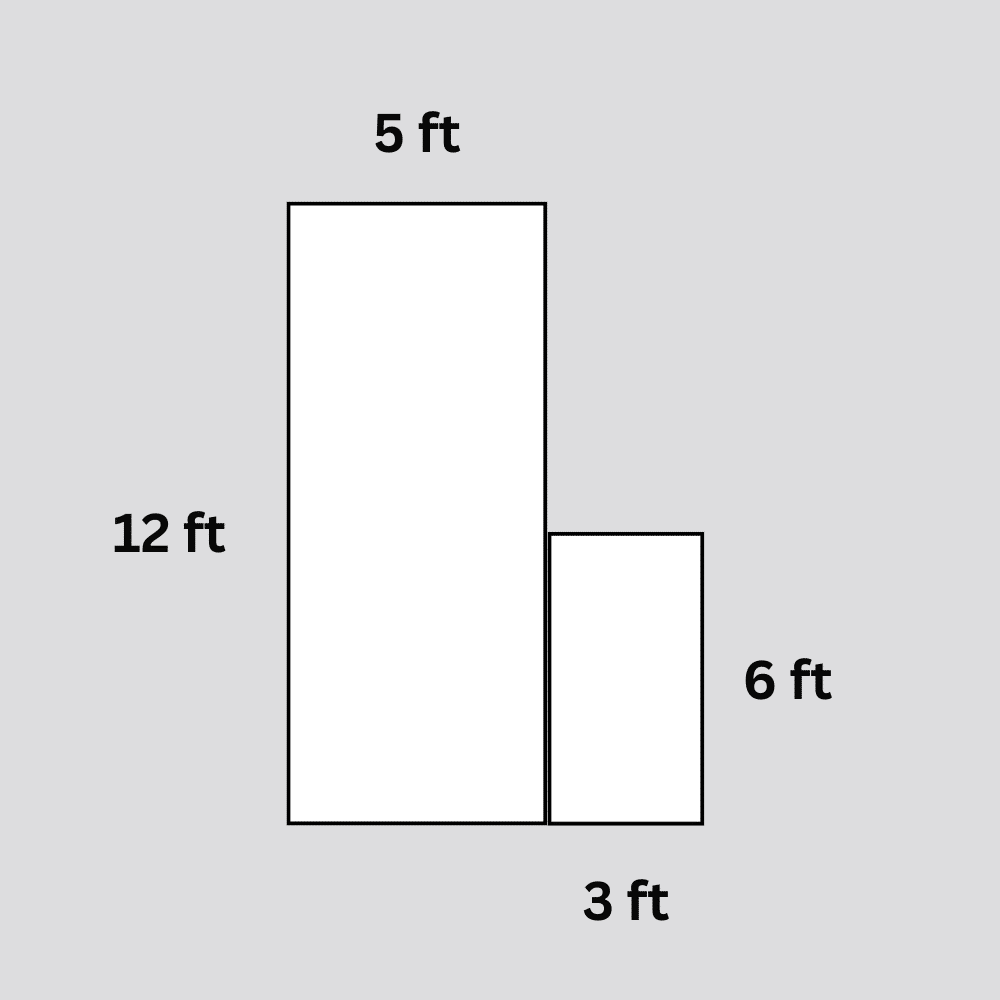
How to Measure Multiple Rooms or a Complex-Shaped Room for Flooring
If you’ve read the above and realized your room is not a square, rectangle, or L-shaped don’t panic. For a complex-shaped room or to measure multiple rooms for flooring simply use the same equation as above.
Follow the diagram, split your room up into as many squares or rectangles as necessary, and measure the lengths and widths.
Once you have done that determine the square footage of a section and write the results down on your paper.
Move throughout the room and do this for each of your sections. Once that’s complete, add all the results for the individual sections together to find your total square footage.
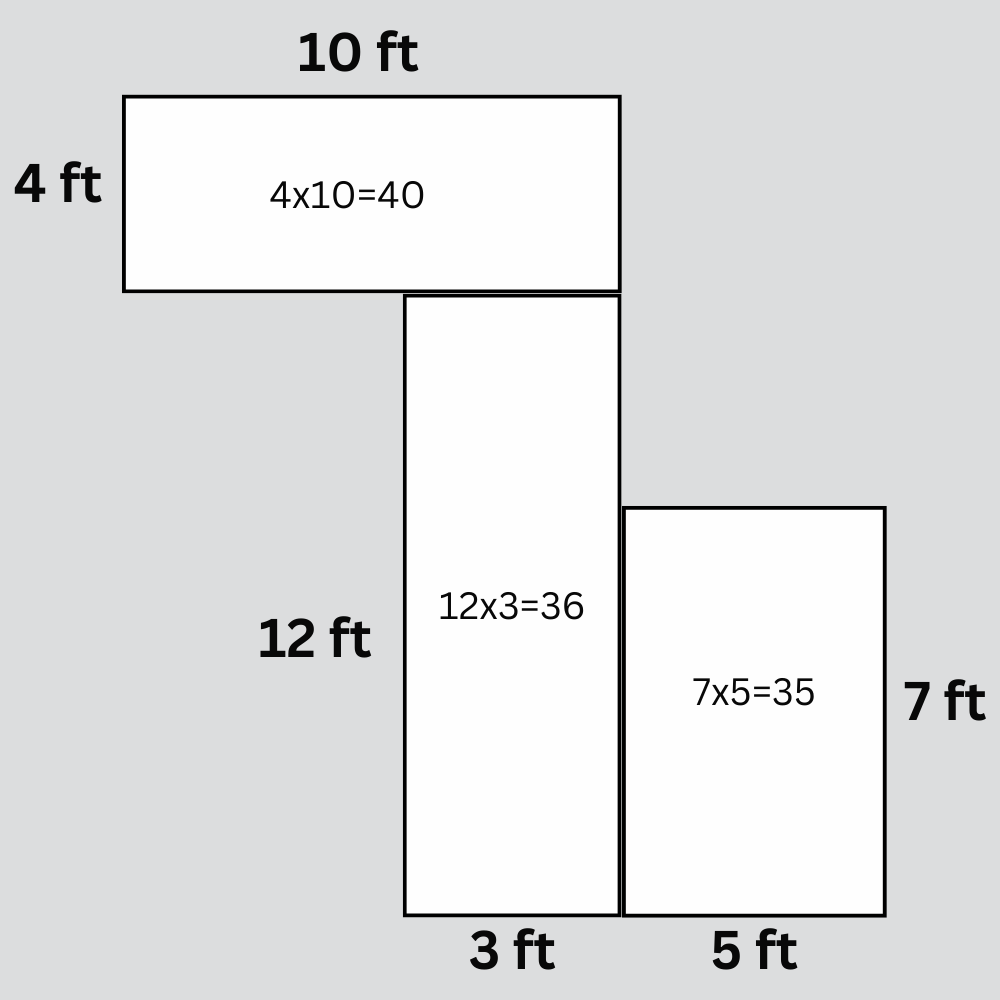
Pro Tips After Measuring Your Flooring
Here are three pro tips for measuring flooring that will help you
- Add 10%-15% to your flooring order. Mistakes can be made when cutting flooring, so you want to make sure you have enough boards to finish the job. This will also leave you with a few boards at the end of the installation, which can be good if something damages the floor. You will be able to replace the board without having to place a new order.
- Double-check all your measurements. Whether you’re an experienced carpenter or a D.I.Y enthusiast, always double-check your measurements. This step should not be overlooked as you want to ensure you have the perfect amount of flooring for the job.
- Purchase quality flooring from a reputable company. The better quality of the flooring, the longer it will last and the better the result will be.
Summary
Measuring a room for hardwood flooring is an important step in the installation process. Accurate measurements will help ensure that your flooring is properly fitted and looks great upon completion.
Calculating the square footage of any room can be easy, especially for square or rectangular-shaped rooms. If the room has a more complex shape, you can break complex-shaped rooms into smaller sections to help simplify the measuring process.
